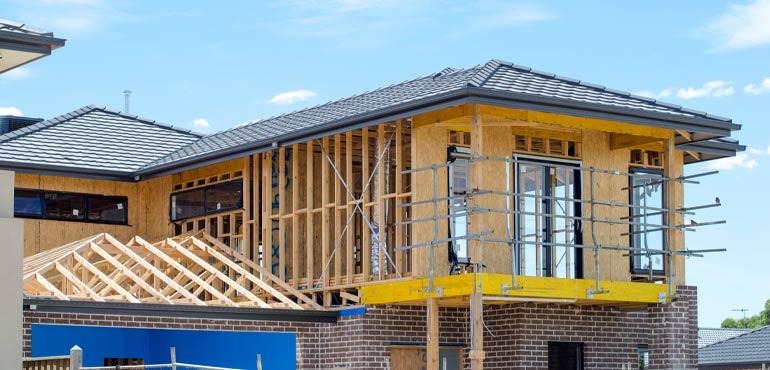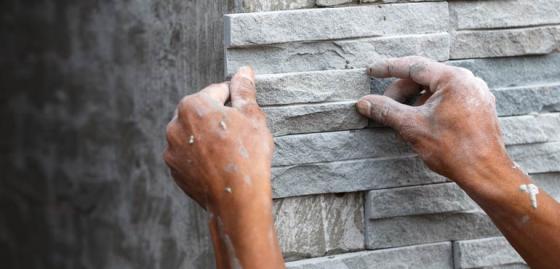
- Home
- Running your business
- Home warranty obligations
- Calculating the premium
Calculating the premium
Learn how to calculate the value of work and the home warranty premium, including with Qleave levy.
Calculating insurable value
The insurable value of the work includes the cost of any associated work included in the contract, such as:
- landscaping
- driveways
- fences
- pool fences
- retaining walls
- air conditioning
- hot water systems
- security doors and grills.
Calculate the insurable value by adding together the value of:
- materials (even if they are being supplied by others)
- labour (which includes the cost of the QLeave levy for projects valued at more than $150,000 (excluding GST)
- GST.
The insurable value excludes the QBCC premium.
If you're building or renovating a single detached dwelling, the premium is based on the insurable value of the work.
If your project is over $150,000 you will also need to factor in the Qleave levy.
Once you have the total insurable value of work you can take out cover.
If you have a contract to construct or renovate 2 or more detached dwellings, the premium is based on the insurable value of the work for each dwelling. You calculate the insurable value using notional pricing.
To work this out:
- Divide the total insurable value of the work by the number of dwellings to get an insurable value of the work for each dwelling.
- Use the premium table to find out the premium payable for each dwelling.
- Multiply this premium amount by the number of dwellings to get the total premium payable.
For example, if you have contracted to build 3 new detached dwellings for $930,000:
- Divide the total ($930,000) by 3 to get $310,000, the insurable value of the work for each dwelling.
- Use the premium table to find out the premium payable for a project with an insurable value of $310,000.
- Multiply this premium amount by 3 to get the total premium payable.
If you're doing work on multiple dwellings or duplexes, you will calculate the premium differently, depending on:
- the insurable value of the work
- what kind of work you're doing.
For most cases you use notional pricing to calculate the premium.
Notional pricing method
In general, the premium is based on the insurable value of the work for each dwelling if you are building or renovating:
- multiple dwellings up to 3 storeys
- duplexes.
You calculate the insurable value using notional pricing.
How to calculate the premium using notional pricing
To work this out:
- Divide the total insurable value of the work by the number of dwellings within the affected building(s) to get an insurable value of the work for each dwelling.
- Use the premium table to find out the premium payable for each dwelling.
- Multiply this premium amount by the number of dwellings to get the total premium payable.
For example, if you have contracted to build 9 units in a block 3 storeys above a car park for $1,800,000:
- Divide the total ($1,800,000) by 9 to get $200,000, the insurable value of the work for each unit.
- Use the premium table to find out the premium payable for a project with an insurable value of $200,000.
- Multiply this premium amount by 9 to get the total premium payable.
If the property you are performing work on has two or more multiple dwellings (singular buildings containing units) and you are only performing work on one building, only count the number of dwellings in the building you are performing work on.
When notional pricing does not apply
Notional pricing does not apply if the only work you are performing is:
- work on the roof of a multiple dwelling or duplex where the insurable value is less than $5,000
- work on the common area (other than footings) of a multiple dwelling or duplex where the insurable value is less than $20,000
- work on the common area, which is not in or on the multiple dwelling or duplex
- constructing work on a related roofed building (e.g. a shed) or a swimming pool that is not in or on the multiple dwelling or duplex.
Notional pricing does not apply to certain work on common property if it is the only work you are performing:
- painting
- solid plastering
- rendering
- fire protection work
- physical termite management work.
Notional pricing also does not apply when:
- an individual unit owner of a multiple dwelling engages a licensed contractor to perform work in their unit.
How to calculate the premium when notional pricing does not apply
The premium for this work is based on the total insurable value of the work, i.e. you don't need to divide the total insurable value of the work by the number of units.
For example:
- if you have contracted to build a swimming pool for a 9-unit block 3 storeys above a car park for $100,000:
- simply use the premium table to find out the premium payable for a project with an insurable value of $100,000.
- if you have contracted to renovate a bathroom in an individual unit, and the insurable value of the work is more than $3,300, the insurance premium is based on the value of that work.
If you enter a contract to install flat-pack cabinets in a residence and the insurable value of the work is more than $3,300 you must pay a premium for this work.
Regardless of who buys the flat-pack cabinets (the owner or the contractor) the insurable value of the work must include both the cost of:
- installing the cabinets (the insurable work)
- the cost of the cabinets.
If this total is more than $3,300, premiums apply. For example:
- a home owner buys flat-pack cabinets from a retailer for $2,500
- the licensed contractor agrees to install the cabinets for $2,000 (this is the insurable work)
- the insurable value of this work is:
- $2,000 (cost of installation) + $2,500 (cost of cabinets) = $4,500
- As the insurable value of the work exceeds $3,300 a premium must be paid.
Under Queensland law you cannot avoid paying the premium by contracting to provide 'labour only'. You must still add the cost of the cabinets to the installation cost to calculate the insurable value of the work.
Calculating premiums with QLeave levy
Licenced contractors carrying out residential construction work in Queensland valued at $150,000 (excluding GST) or more must pay the QLeave levy in addition to the home warranty premium.
The cost of each premium or levy must be included when calculating the other.
As the calculations are done slightly differently, it doesn't matter which one you pay first as the end result will be the same, i.e. you can choose to:
- pay the QLeave levy first, then include the cost of the levy before you calculate the home warranty premium
- calculate home warranty premium first, before you calculate the QLeave levy.
Worked examples
It doesn't matter which option you choose, you get the same result.
For the purposes of calculating the QLeave levy the value of work excludes GST.
| Value of work for QLeave (excl GST) | $200,000 |
| QL levy is ($200,000 x .575%) | $1,150 |
| Total | $201,150 |
| QBCC insurable value (incl GST) | $220,000 |
| Add QL levy | $1,150 |
| Total insurable value | $221,150 |
| QBCC premium on $221,150 | $2,395.7 |
| Value of work for QLeave (excl GST) | $200,000 |
| Add home warranty premium | $2,396 |
| Total | $202,396 |
| QBCC insurable value (incl GST) | $220,000 |
| Add QL levy ($202,396 x 0.575% ) | $1,164 |
| Total insurable value | $221,164 |
| QBCC premium on $221,164 | $2,395.7 |
Then add QLeave levy to the total:
| Home warranty insurable value (inc GST) | $220,000 |
| HW premium on $220,000 | $2,364.05 |
| QLeave value of work (excl GST) | $200,000 |
| Add HW premium | $2,364 |
| Total | $202,364 |
| QL levy is $202,364 x 0.575% | $1,164 |
| QBCC insurable value (incl GST) | $220,000 |
| Add QL levy | $1,164 |
| QBCC total insurable value | $221,164 |
| Home warranty premium on $221,164 | $2,395.75 |
| QLeave value of work (excl GST) | $200,000 |
| Add HW premium | $2,396 |
| Total | $202,396 |
| QL levy is $202,396 x 0.575% | $1,164 |
Explanatory notes
- The value of work (used to calculate the QLeave levy) is the cost paid by the project owner.
- QLeave levy only needs to be paid on projects valued at $150,000 and above. For more information on how to notify and pay call 1300 753 283 or email levies@qleave.qld.gov.au.
- The QLeave levy excludes GST.
- The QLeave levy is rounded to the nearest dollar.
- Home warranty insurance only needs to be paid on projects valued at $3300 and above.
- The home warranty premium includes GST.
- The home warranty premium is rounded to the nearest 5c or 10c.
- The insurable value for home warranty premiums is calculated on the basis that all building and other materials are provided by the contractor (even if that is not the case).
- QBCC premium tables increase premiums in $1,000 increments relative to the insurable value of the work. If the insurable value of the work is any amount over the $1,000 threshold, it bumps the premium amount up to the next level premium.

